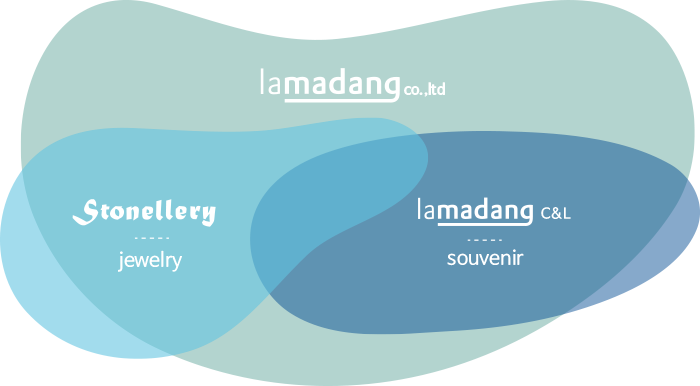ABOUT
Who we are
lamadang
As our lifestyles have changed, most residential spaces these days do not have a yard which used to be an integral part of houses. Yards were places where all sorts of family events happened and family members, relatives and neighbors gathered to share various ideas, opinions and stories. ‘Lamadang’ is a place where people gather together to promote the beautiful nature and cultural legacies of provinces, to share their ideas and to dream their dreams and make them come true.
TEAM

Lamadang consists of two teams: Jewelry Stonellery and Lamadang Culture & Lifestyle.
Stonellery is a jewelry brand. We are making unique jewelry designs that cannot be found anywhere else by using various images of animals and nature that appear on petroglyphs.
Products of Stonellery, a jewelry brand, are hand-made, and the workers of Lamadang C&L(Culture & Lifestyle) design a variety of local cultural products.
Where the story begins
Bangudae Petroglyphs
National Treasure No. 285
Petroglyphs were drawn by people in the prehistoric times in sacred places, such as at large rocks, and signified the offering up of prayers for their wishes. Petroglyphs, which are relics related to the northern cultural sphere of the world, contain data that inform and educate us about the origin and history of our nation.
A total of 200 or more paintings about land animals, sea fish and hunting are carved on rocks which have been repeatedly flooded and exposed due to Sayeon Dam that was constructed in 1965. Tigers, wild boars and deer are included among the land animals portrayed there: Some tigers are depicted as falling into traps and there also are pregnant ones.
The paintings portray wild pigs copulating, deer leading their cubs or carrying their offspring in their womb. They also portray sea creatures including whales which have been harpooned, are pregnant or are leading their calves.
Hunting scenes portray shamans wearing masks, hunters hunting animals and fishermen catching whales on boats as well as fishing nets or boats. Those scenes were carved on rocks by people in prehistoric times in the hope that the hunt would be successful and there would always be plenty of animals to hunt.
Given that they were made by techniques in which outlines where chiseled out with carving devices, whole parts torn off and the carved outlines grounded, they are believed to have been produced from the end of the New Stone Age to the Bronze Age.
As works of art that portrayed animals and scenes of hunting in a vibrant and realistic manner with lines and dots, they can be termed both examples of hunting art and religious art and regarded as masterpieces that inform us of prehistoric lifestyles and customs.
(Source: Cultural Heritage Administration)
